Mad Men "Severance": Misleading Expectations
Using expectations and camerawork to mislead in Mad Men's "Severance"
Mad Men’s highly anticipated final season’s second half began with an interesting sequence which uses the expectations we have about the kind of man Donald Draper is to set up one of the best paraprosdokian scenes in the series.
(Apart from potentially spoiling this single sequence, this writeup does not give away any plot points from the last season.)
There are many adulatory and superlative terms which could be used to describe the flawed persona of Mad Men’s Donald Draper – but if a pejorative term had to be produced, it would probably be a toss-up between “drunk” and “letch”. We expect him to go after any woman with a heartbeat, as it’s an integral part of the character’s construction; he’s a very broken character, which is presumably what draws us to him.
The episode opens on a medium closeup shot of a woman in a fur coat with no dialogue. She’s aligned on the left third of the frame, looking expectantly out into the empty space opposite from her.

Flip to the apparent reverse shot: a medium closeup shot of our dubious protagonist, Mr. Draper, occupying the right third of the frame. He’s smoking, and also looking expectantly into the empty space in his frame.
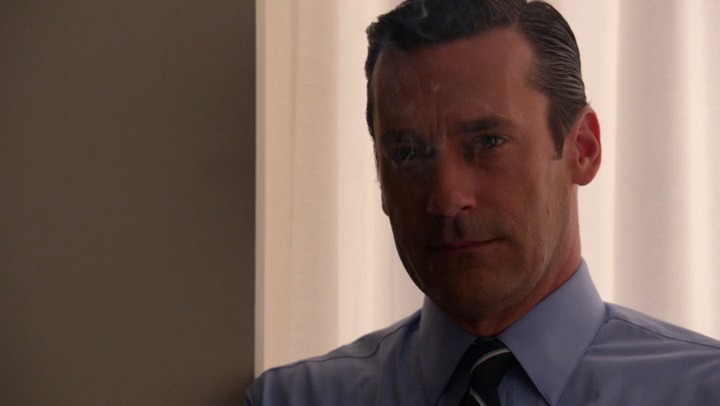
The woman finally speaks, setting up a shot / reverse-shot dynamic to confirm that she is, indeed speaking to Don.
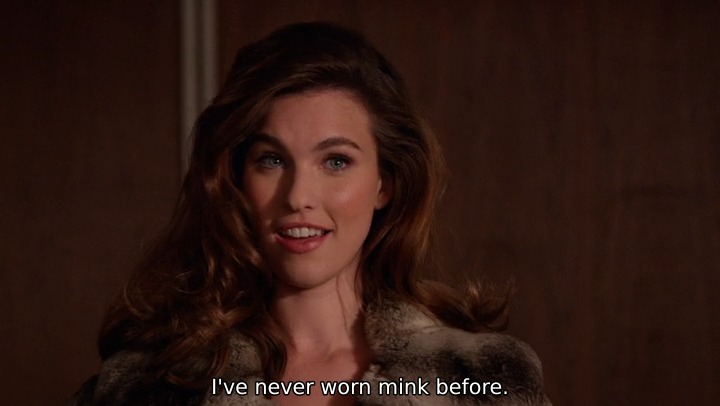
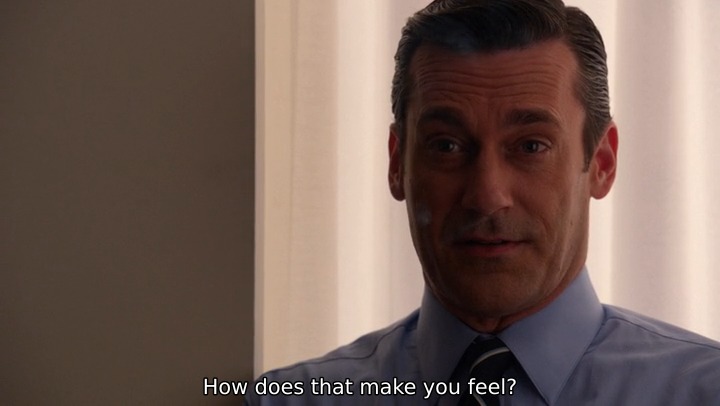
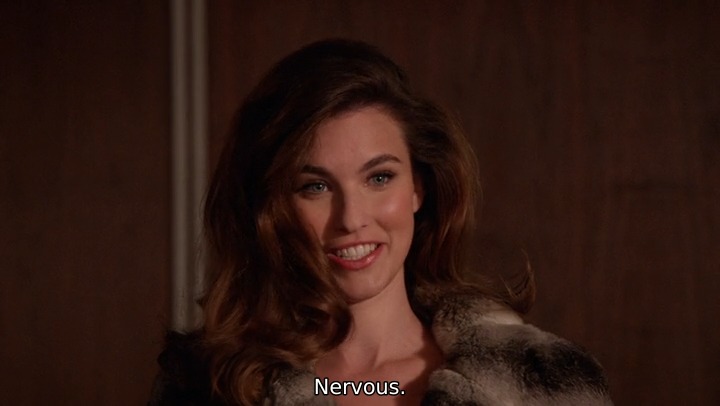
Context plays an important role in the comprehension of this scene; without knowing who either of the characters are, we assume that these two could be in an intimate setting – but knowing who Don is, we accept it without apprehension. After all, we’ve seen him engage in countless trysts over the seven year run of Mad Men.
His next line confirms what we’ve been thinking:
“You’re not supposed to talk.”


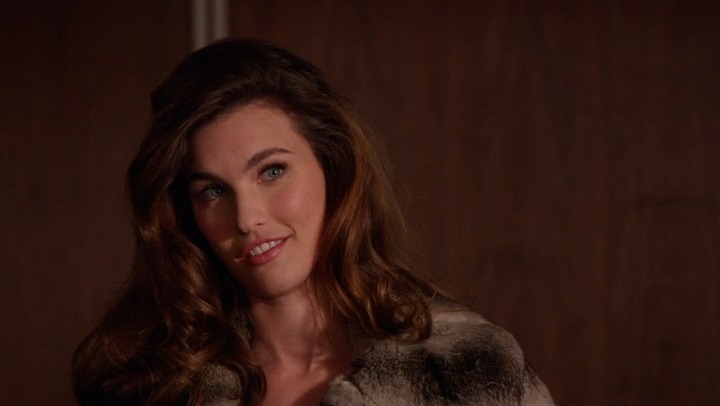
Instead of going back to the medium closeup of Don, we lean-out to a medium shot, where we can see that Don is holding a cup of coffee. He’s still occupying the right third, but we can now see that he’s leaning against the wall.
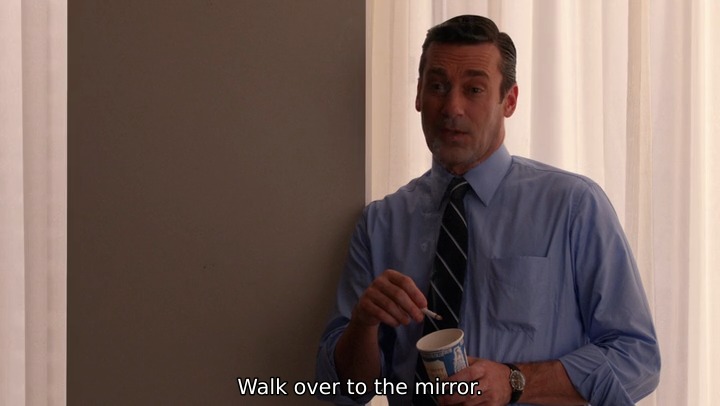
The reverse of the unnamed woman also leans out to a standard medium shot, but we observe her through a mirror, which occupies the left third instead of her. She doesn’t say anything.

We continue the same shot / reverse-shot pattern for another rotation …
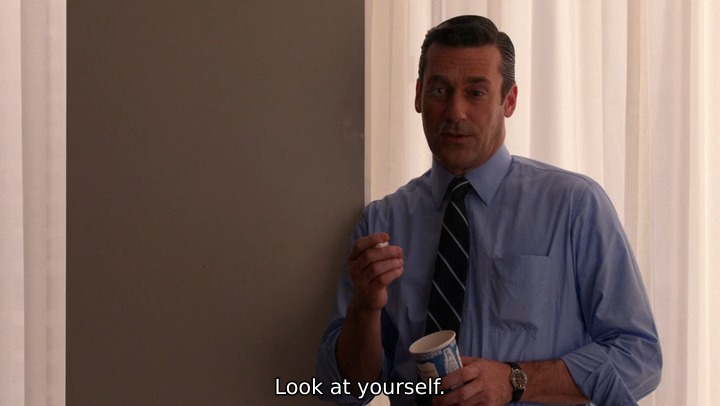
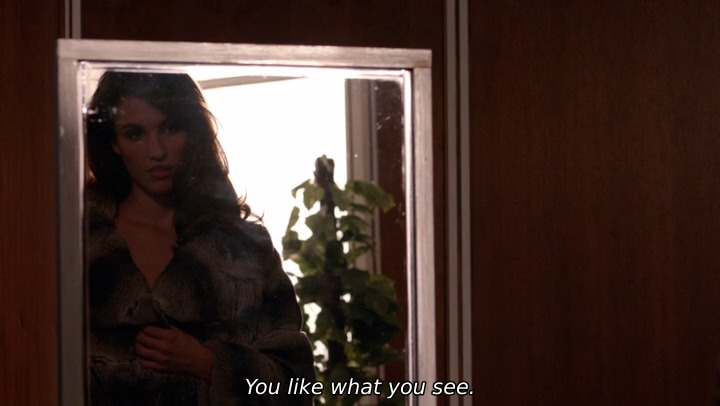
… then Don says:
“Don’t open the whole coat. Just try to make it look like you’re just wearing the fur.”
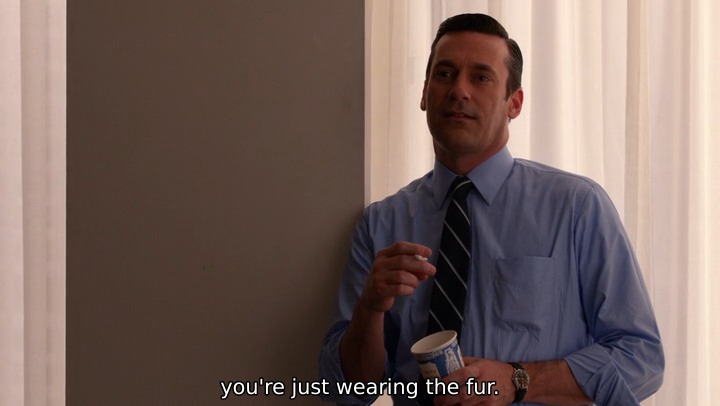
Something is off about this situation, even though we’re not initially aware of exactly what it is. The framing, so far, has been relatively intimate and close, although the shots have been getting wider.
We jump cut to a medium-wide shot, with the two characters occupying the same positions on the vertical thirds.
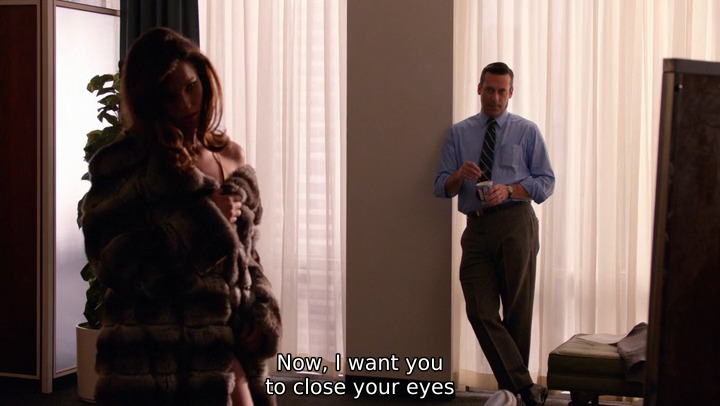
Further complicating the matter of our interpretation of the scene, Don gives her the following directive:
“Now, I want you to close your eyes and take a deep breath. And when I tell you, you’re gonna put your leg up on that chair, let the coat slide down, and show me how smooth your skin is.”

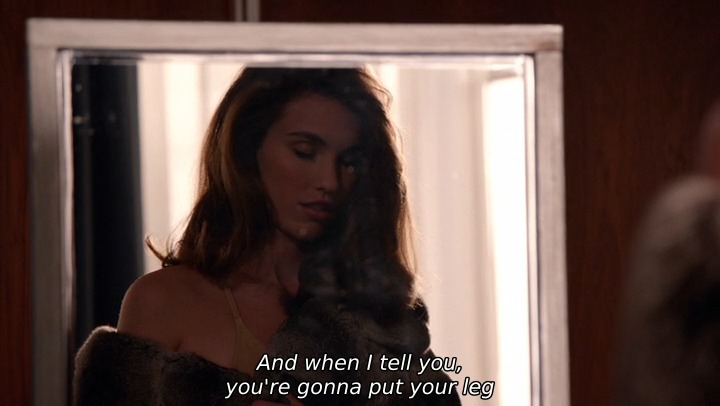
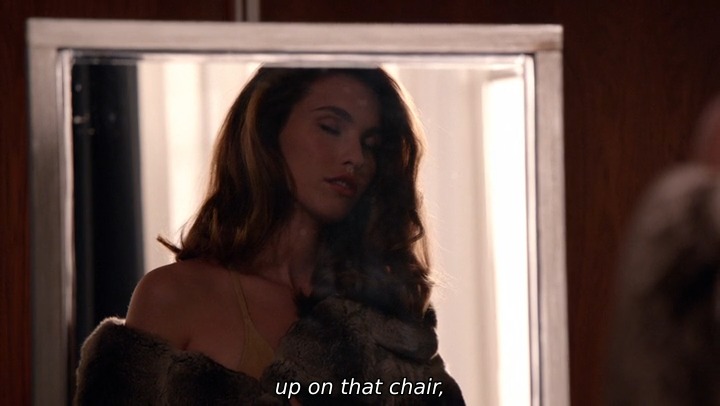
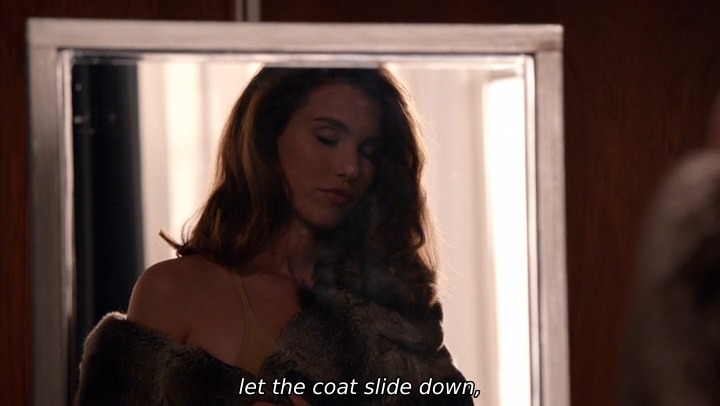

We are then treated to this juxtaposition of images …
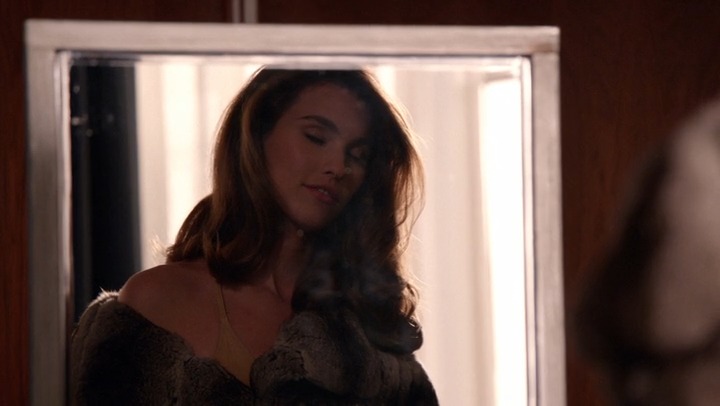
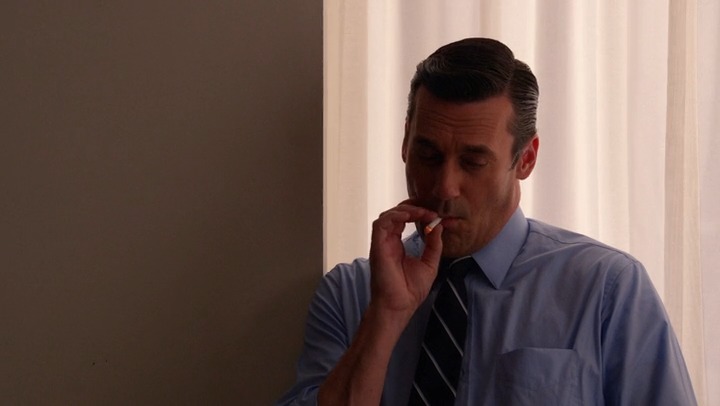
… which clearly evoke the notion of sexual tension or foreshadowing. The camera has jumped back in to a more intimate close framing with the medium close-up.
As Don drops his cigarette into his coffee (which can be viewed, in the context of what we’ve seen so far, as a potential sexual metaphor), we jump into a close-up shot montage, showing what we believe to be an intimate moment:
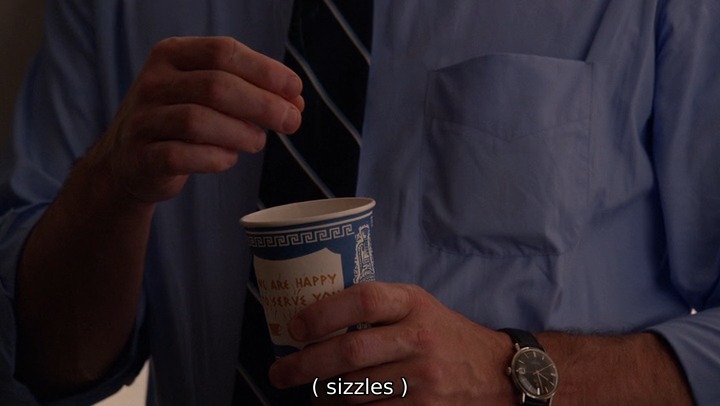
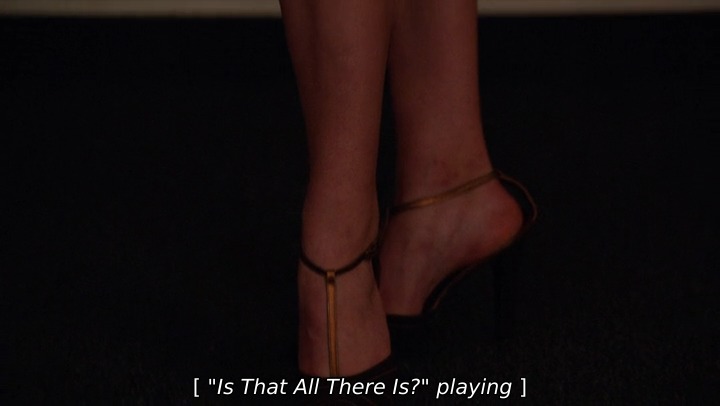
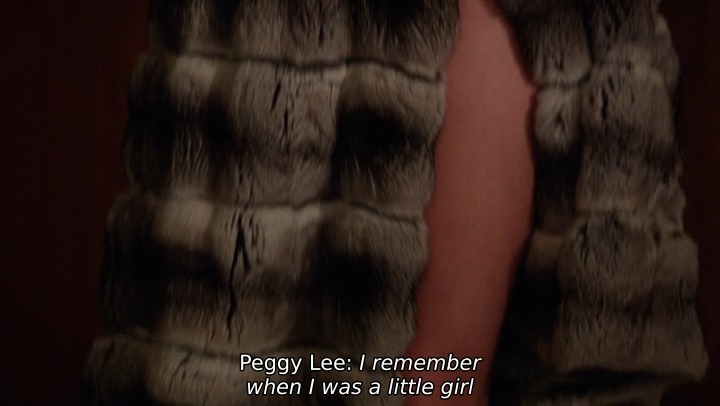
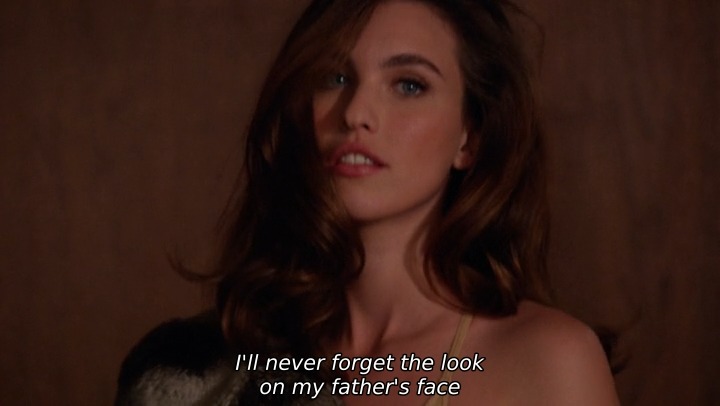
But what is this – we jump back out to a medium-wide shot, as we show the unnamed woman walking between the vertical thirds:
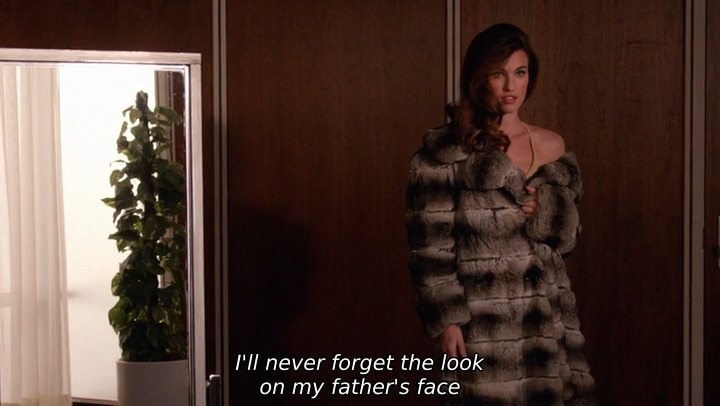

Reverse the angle so that we’re behind her, and both her and Don are still in the same basic frame positions which we originally saw them in, but framed in a medium-wide shot.
We can see what looks to be the entire room, although a number of objects are acting as blocking cards, keeping us from seeing the entirety of the scene.

Back to intimate close-ups, this time juxtaposing her legs …

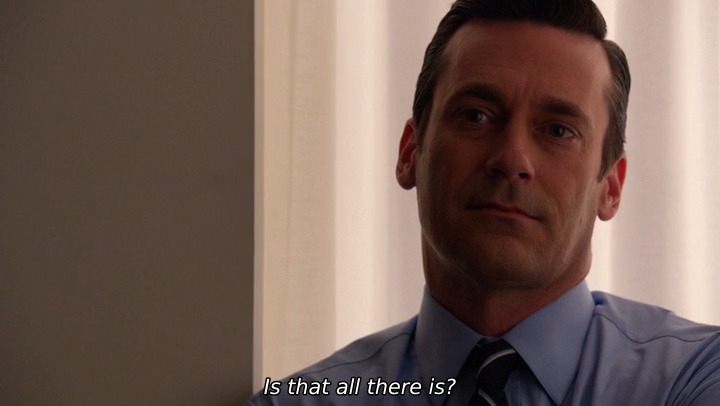
… and his face. The Kuleshov Effect is implying that he is staring at her legs; that the close-up scanning view of her is actually Don’s point of view.
And back to a close-up of her face, slightly larger in frame, but occupying the same position as his.
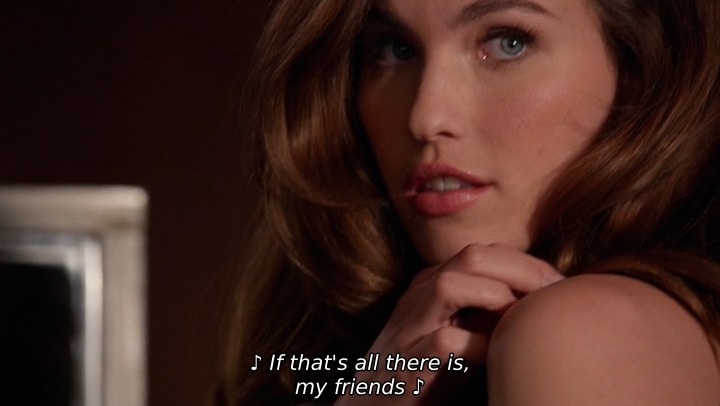
Now, Don reacts in an ambiguous way, which we believe confirms what we’ve been seeing and hearing …
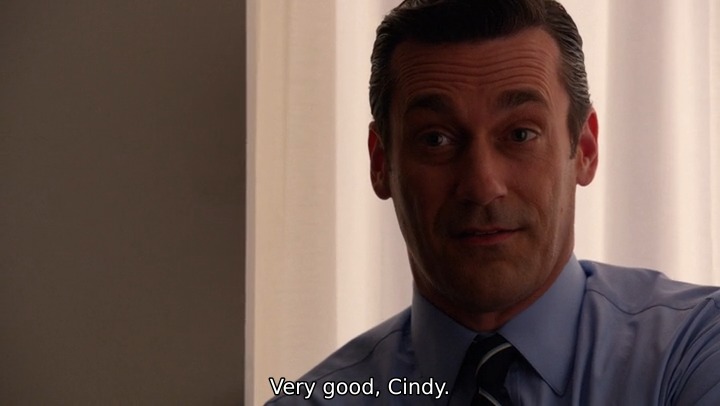
… but it doesn’t. The setup is a lie, confirmed by the angle which the camera has so carefully avoided:
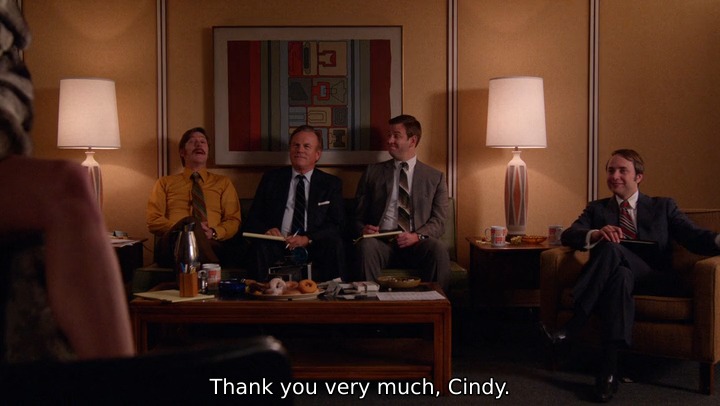
We were never shown the space between the two characters, and by the use of a longer lens to compress the space between them, we were not aware that there were not only four other people in the room, but that they were between the two characters we’ve seen.
This would not have been possible without our pre-existing expectations for Don’s character and without some very clever visual trickery.
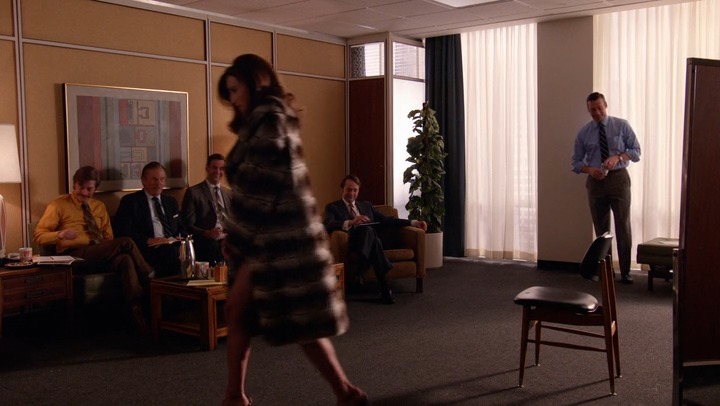
Using the mirror as a device to indicate deception is a common practice in noir and neo-noir films and television, but it’s not often used to indicate deception as part of the perspective with which we are presented the diegetic reality of the scene.
This reveal reminds me of the Gilliam reveals from Baron Munchausen; Hornbacher shows you everything – or so you believe – only to show you that he has been misleading you the entire time.
(All images are presented under fair use guidelines – all frame grabs are property of Lionsgate Television, Weiner Brothers, American Movie Classics (AMC), or any other entities who hold copyright on this film. They are presented for exclusively educational purposes.)